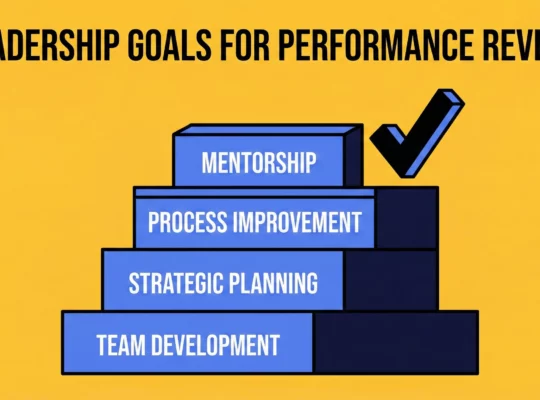Takeaways:
- Employer branding ROI is critical for talent acquisition efficiency, enhancing recruitment metrics like cost-per-hire and time-to-fill.
- Strong employer brands drive financial benefits beyond recruitment, including improved employee productivity, reduced turnover, and increased shareholder value.
- Key metrics for measuring employer branding ROI span recruitment, engagement, retention, and financial impact.
- Developing a compelling Employer Value Proposition (EVP) and leveraging digital channels are essential for an effective employer branding strategy.
- Integrating AI-powered analytics enables data-driven decision-making to optimize employer branding initiatives.
- Case studies showcase real-world success stories across industries, demonstrating the measurable impact of strategic employer branding.
- Future trends like remote work and sustainability will shape the evolution of employer branding strategies and ROI calculations.
- A structured implementation framework and addressing common challenges are critical for maximizing long-term employer branding ROI.
Table of Contents
- Understanding the Strategic Value of Employer Branding ROI
- Key Metrics That Drive Employer Branding ROI
- Building an Effective Employer Branding Strategy
- Technology and Analytics in Employer Branding
- Real-World Success Stories and Case Studies
- Future Trends in Employer Branding
- Maximizing Your Employer Branding Investment
- Actionable Implementation Strategies
- Common Challenges and Solutions
- Frequently Asked Questions
- The Future of Employer Branding ROI
Measuring employer branding ROI is crucial for modern organizations seeking to optimize their talent acquisition strategies. As companies invest more resources into building their employer brand, marketing, and employer branding managers need concrete methods to demonstrate the return on these investments. This comprehensive guide explores how to effectively measure and maximize your employer branding ROI while building a sustainable talent pipeline for your organization.
Understanding the Strategic Value of Employer Branding ROI
Employer branding ROI encompasses quantitative and qualitative measures that reflect how effectively your organization attracts, engages, and retains top talent. In today’s competitive market, understanding this metric has become essential for organizations seeking to establish themselves as employers of choice.
Your employer branding ROI directly impacts your talent acquisition efficiency, affecting everything from recruitment costs to the quality of incoming candidates. Organizations with strong employer brands consistently demonstrate superior performance across key metrics. The data shows that companies investing strategically in employer branding experience up to 50% reduction in cost-per-hire and 40% faster time-to-fill rates for open positions.
The financial implications of effective employer branding extend far beyond basic recruitment metrics. Strong employer brands generate measurable improvements in workforce productivity, with studies showing that companies with robust employer branding strategies see up to 28% reduction in turnover and significantly higher levels of employee engagement. This enhanced engagement translates directly into improved customer satisfaction and increased shareholder value.
The Ripple Effect of Employer Branding Investment
When organizations invest in their employer brand, they create a powerful multiplier effect that influences every aspect of the business. A well-crafted employer brand shapes perceptions among potential candidates, current employees, and customers. Companies with strong employer brands report that their employees are 69% more likely to recommend their products and services, creating a seamless connection between employer branding ROI and overall business performance.
Key Metrics That Drive Employer Branding ROI
Understanding and measuring employer branding ROI requires a comprehensive approach to metric tracking and analysis. These measurements should span multiple dimensions of organizational performance, providing a complete picture of your employer branding effectiveness.
Recruitment Metrics and Performance Indicators
The recruitment efficiency matrix serves as a primary indicator of employer branding ROI. Time-to-fill positions represents a crucial metric, with shorter periods indicating stronger brand appeal among qualified candidates. Companies with robust employer brands typically see a 40% reduction in time-to-fill compared to competitors with weaker employer value propositions.
Quality of hire has emerged as another vital metric in measuring employer branding ROI. Organizations with strong employer brands report a significant improvement in candidate quality, with new hires demonstrating higher performance levels and better cultural fit. This improvement manifests in reduced training time, faster productivity ramp-up, and increased employee satisfaction scores.
Engagement and Retention Analytics
Employee engagement metrics provide deep insights into the effectiveness of your employer branding initiatives. The Employee Net Promoter Score (eNPS) is a key indicator of brand strength, measuring workforce satisfaction and loyalty. Companies with high employer branding ROI typically maintain eNPS scores above 30, indicating strong employee advocacy and positive workplace perception.
Retention rates tell a compelling story about employer branding success. Organizations with strong employer brands experience an average increase of 28% in retention rates compared to competitors. This improved retention translates directly into cost savings, with estimates suggesting that replacing a single employee can cost up to 200% of their annual salary.
Building an Effective Employer Branding Strategy
Creating a strategy that maximizes employer branding ROI requires a thoughtful, data-driven approach. The foundation of this strategy lies in developing a compelling Employer Value Proposition (EVP) that resonates with both current employees and potential candidates. Organizations that successfully articulate their EVP experience twice the level of candidate attraction compared to companies with undefined value propositions.
Crafting Your Employer Value Proposition
Your EVP should reflect your organization’s unique cultural fingerprint while aligning with broader business objectives. Consider that 86% of job seekers research company reviews and ratings before deciding to apply for a position. This statistic underscores the importance of authenticity in your employer branding messages and the need to deliver on your brand promises.
Social Media Presence and Digital Footprint
The digital landscape plays a pivotal role in shaping employer branding ROI. A strategic social media presence enables organizations to showcase their workplace culture and connect with potential candidates where they spend their time. Companies leveraging social media for employer branding report a 50% increase in qualified applicant pools and a 45% decrease in marketing cost per candidate.
Technology and Analytics in Employer Branding
Modern employer branding demands sophisticated technological solutions to track and optimize ROI. The integration of AI-driven recruitment analytics has transformed how organizations measure and improve their employer branding efforts.
Data-Driven Decision Making
Real-time analytics provide invaluable insights into the effectiveness of employer branding initiatives. Organizations utilizing advanced analytics tools report a 73% improvement in their ability to identify and attract top talent. These tools enable precise tracking of candidate journey touchpoints, from initial brand awareness through to application and hiring.
Impact of Analytics on Employer Branding ROI
| Metric | Traditional Approach | Analytics-Driven Approach | Improvement |
| Candidate Quality | Base reference | 40% higher quality | +40% |
| Time to Hire | 45 days average | 28 days average | -38% |
| Cost per Hire | Base cost | 35% reduction | -35% |
| Offer Acceptance | 65% average | 85% average | +31% |
Real-World Success Stories and Case Studies
The tangible impact of employer branding ROI becomes evident through examining successful implementations across various industries. These cases demonstrate the measurable benefits of strategic employer branding investments.
Technology Sector Transformation
A leading technology company revamped its employer branding strategy, focusing on authentic storytelling and employee advocacy. This resulted in a 47% increase in qualified applications and a 35% reduction in recruitment marketing spend. Their approach centered on showcasing real employee experiences through various channels, creating a more genuine connection with potential candidates.
Healthcare Industry Innovation
Within the healthcare sector, a regional hospital network implemented a comprehensive employer branding strategy that yielded remarkable results. Their talent acquisition efficiency improved dramatically, with time-to-fill for critical positions decreasing by 40% and employee referrals increasing by 65%.
Future Trends in Employer Branding
The landscape of employer branding continues to evolve, driven by technological advancement and changing workforce expectations. Understanding these trends is crucial for maintaining competitive employer branding ROI in the years ahead.
Remote Work and Digital Culture
The rise of remote work has fundamentally altered how organizations approach employer branding. Companies must now showcase their digital workplace culture and remote work capabilities as key components of their employer brand. Those successfully adapting to this shift report a 58% larger talent pool and 35% higher employee satisfaction rates.
Sustainability and Social Impact
Environmental, Social, and Governance (ESG) factors have become increasingly important in employer branding. Organizations demonstrating strong social responsibility in their branding efforts see a 71% higher rate of candidate attraction among millennial and Gen Z job seekers.
Maximizing Your Employer Branding Investment
To optimize employer branding ROI, organizations must adopt a holistic approach that integrates various elements of the employee experience. This integration ensures that branding efforts translate into tangible business outcomes.
Strategic Implementation Framework
The key to maximizing ROI lies in creating a systematic approach to employer branding implementation. This framework should encompass recruitment marketing, employee experience, and brand advocacy programs. Organizations that adopt this integrated approach report up to 50% higher success rates in achieving their employer branding objectives.
Measuring Long-Term Impact
The sustained success of employer branding initiatives relies on monitoring long-term value creation. Organizations must track metrics beyond immediate recruitment outcomes to understand the full scope of their employer branding ROI. Companies that maintain consistent measurement protocols report 43% better accuracy in predicting future talent needs and adjusting their strategies accordingly.
Building Brand Ambassadors
Developing internal brand ambassadors represents a powerful multiplier for employer branding ROI. When employees actively promote their workplace experience, organizations see a 62% increase in organic candidate applications and a 45% reduction in recruitment advertising costs. This authentic advocacy creates a self-reinforcing cycle of positive brand perception and talent attraction.
Actionable Implementation Strategies
Success in employer branding requires a structured approach to implementation. Organizations achieving the highest employer branding ROI follow a clear framework for execution and measurement.
The foundation begins with establishing clear baseline metrics. Understanding your starting point allows for accurate measurement of progress and ROI calculation. Leading organizations conduct comprehensive audits of their current employer brand perception, including internal surveys, external reputation analysis, and competitor benchmarking.
Next, developing targeted campaigns requires alignment between marketing and HR teams. This collaborative approach ensures consistent messaging and maximizes the impact of employer branding investments. Organizations that achieve this alignment report a 34% higher success rate in meeting their employer branding objectives.
Common Challenges and Solutions
Even well-planned employer branding strategies face obstacles. Understanding these challenges and having prepared solutions ensures sustained ROI growth.
One significant challenge lies in maintaining brand authenticity while scaling recruitment efforts. Organizations must balance the need for growth with preserving their cultural identity. Successful companies address this through detailed documentation of their employer value proposition and regular training for hiring managers and recruiters.
Another common obstacle involves measuring intangible benefits. While some aspects of employer branding ROI are easily quantifiable, others, such as improved workplace culture or enhanced reputation, require more nuanced evaluation approaches. Leading organizations overcome this by developing comprehensive measurement frameworks that incorporate both quantitative and qualitative indicators.
Frequently Asked Questions
What is the average timeframe for seeing measurable employer branding ROI?
Most organizations begin seeing initial results within 6-9 months of implementing strategic employer branding initiatives. Significant impacts on metrics like cost-per-hire and time-to-fill typically emerge within 12-18 months.
How can small companies compete with larger organizations in employer branding?
Smaller organizations often achieve higher employer branding ROI by focusing on their unique cultural advantages and authentic employee experiences. They typically see success through targeted messaging and strong employee advocacy programs.
What percentage of the recruitment budget should be allocated to employer branding?
Leading organizations typically invest 15-30% of their recruitment budget in employer branding initiatives. Companies with mature employer brands report optimal ROI achievement with investments in this range.
How does employer branding ROI differ across industries?
While core metrics remain consistent, industry-specific factors influence the scale and timing of ROI. Technology companies often see faster results, while traditional industries may experience longer development periods but more sustainable long-term benefits.
Can negative employer branding ROI be reversed?
Yes, organizations can transform negative brand perception through strategic intervention. Success stories show that focused reputation management combined with authentic workplace improvements can yield positive ROI within 18-24 months.
The Future of Employer Branding ROI
As we move forward, the landscape of employer branding continues to evolve. Organizations must prepare for emerging trends while maintaining a focus on sustainable ROI growth. The integration of artificial intelligence and predictive analytics promises to revolutionize how we measure and optimize employer branding investments.
At Review.jobs, we believe that successful employer branding represents a critical investment in your organization’s future. The most successful companies will maintain a balanced approach to measuring and optimizing their employer branding ROI while staying true to their core values and employee value proposition. By following the strategies and frameworks outlined in this guide, organizations can build strong, authentic employer brands that deliver measurable returns and sustainable competitive advantages in the talent marketplace.
Remember, employer branding ROI isn’t just about numbers – it’s about creating a workplace that attracts, engages, and retains the best talent while driving business success. The journey to building a strong employer brand requires patience, commitment, and continuous optimization, but the returns make it one of the most valuable investments an organization can make in its future.





